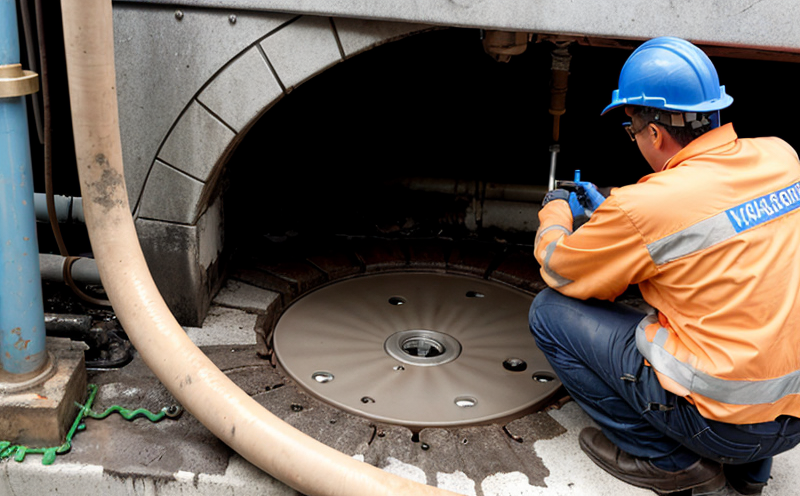Hydraulic system leakage inspection
The hydraulic system is a critical component in many industrial applications. Leakage can lead to safety hazards and significant downtime. Therefore, thorough inspection of hydraulic systems is essential for ensuring reliability and longevity. This service focuses on identifying leaks within the hydraulic system to ensure optimal performance and safety.
Leakage in hydraulic systems typically occurs at joints, seals, or worn components. Detecting these issues early can prevent catastrophic failures that could endanger personnel and equipment. Our team of experts uses advanced techniques such as dye penetrant inspection (DPI), ultrasonic testing, and visual inspection to identify even the smallest leaks.
Our process begins with a thorough visual examination of the hydraulic system, followed by dye penetrant inspection if necessary. This involves applying a fluorescent dye to suspect areas under UV light; any leakage will cause the dye to spread, highlighting the location of the leak. Ultrasonic testing can also be used for deeper inspections where precise measurement is required.
Once leaks are detected, they need to be addressed promptly to prevent further damage and potential accidents. This might involve replacing seals or fixing joints with appropriate adhesives. Our laboratory provides a comprehensive report detailing all findings along with recommendations for corrective actions.
The importance of regular inspection cannot be overstated. Not only does it help maintain safety standards but also ensures compliance with international regulations such as ISO 12156-4 and ASME PTC 19.8. These standards provide guidelines on how to perform leakage testing effectively, ensuring that all components meet the required specifications.
By investing in regular hydraulic system leak inspections, organizations can reduce maintenance costs, extend equipment life, and enhance overall operational efficiency. Early detection of leaks allows for targeted repairs rather than complete replacement, saving time and resources.
Industry Applications
- Manufacturing plants where heavy machinery operates continuously,
- Construction sites requiring large hydraulic equipment,
- Agricultural machinery that relies heavily on hydraulics for operation,
- Offshore oil and gas platforms where reliability is paramount,
- Transportation sectors involving commercial vehicles with complex hydraulic systems.
In each of these industries, the integrity of the hydraulic system directly impacts productivity and safety. Regular leakage inspections are crucial to maintaining this integrity.
International Acceptance and Recognition
The inspection of hydraulic systems for leaks is recognized globally as a standard practice in ensuring equipment reliability and compliance with safety regulations. Organizations such as the International Organization for Standardization (ISO) provide comprehensive guidelines on how to conduct these inspections effectively.
Specifically, ISO 12156-4:2019 outlines procedures for determining leakage rates of hydraulic systems. This standard specifies methods for testing and measuring leaks in various types of hydraulic systems, providing a framework that ensures consistent and accurate results across different regions and organizations.
In addition to ISO standards, American Society of Mechanical Engineers (ASME) offers its own set of guidelines through ASME PTC 19.8:2020, which focuses on the performance testing of power transmission systems including hydraulic components. Compliance with these international standards not only enhances credibility but also facilitates cross-border trade and collaboration.
Recognition from industry bodies like ASME and acceptance by regulatory authorities worldwide underscore the importance of rigorous leak inspections in maintaining high quality and safety standards.
Use Cases and Application Examples
In a manufacturing plant, for instance, regular hydraulic system leakage inspections can prevent costly downtime due to failures. In construction, these inspections ensure that cranes and other heavy machinery operate safely without compromising productivity.
Agricultural equipment also benefits significantly from such inspections as they reduce the risk of accidents during operation. Offshore oil platforms where safety is a top priority, regular checks can help maintain critical operations amidst challenging environmental conditions.
For commercial vehicles, especially those used in transportation sectors, preventing leaks ensures smoother running and extends the life of expensive components. In all these cases, early detection through inspection minimizes repair costs while enhancing overall operational efficiency.





